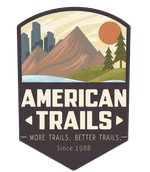Designing Near Wetlands, Streams, Forests, and Other Environmental Resources
Trail Competencies
-
Project Planning and Design
- • Compliance and Permitting
-
Summary
This presentation discusses the seven biggest considerations for planners and designers when designing near wetlands, streams, forests, and other environmental resources.
Overview
Webinar Outline
Trails are seen in many shapes and forms, but the best trails are places for users to enjoy for many reasons, as well as connections within communities. Likewise, trails can create spaces with a strong sense of community and extend over, through and around many types of resources. When designing a pedestrian bridge, boardwalk or through the forest, planners and designers should consider seven topics that will have a major impact on the long-term success of a project. Each item marked off the design checklist is another step toward a lasting successful project.
This presentation discusses the seven biggest considerations for planners and designers when designing near wetlands, streams, forests, and other environmental resources. The discussion covers how the features in the landscape drive the type of trail, boardwalk or bridge, depending on where it is and how it will be used. The presentation covers code requirements, trail width, site conditions, geotechnical considerations, structural considerations, permitting, durability and user safety.
Learning Objectives
- Learn how to identify and plan with environmental resources.
- Identify potential solutions to designing with environmental resources.
- Learn about how a multifaceted approach to planning and design of trails with environmental resources can be implemented in any community, for various types of recreational resource plans and projects.
Trail Types Covered
General. All trail types are relevant.
| Publisher | American Trails |
|---|---|
| Published | Jun 2019 |
This link will take you away from TrailSkills.org. Please report broken links to us.
576 people have viewed this resource
